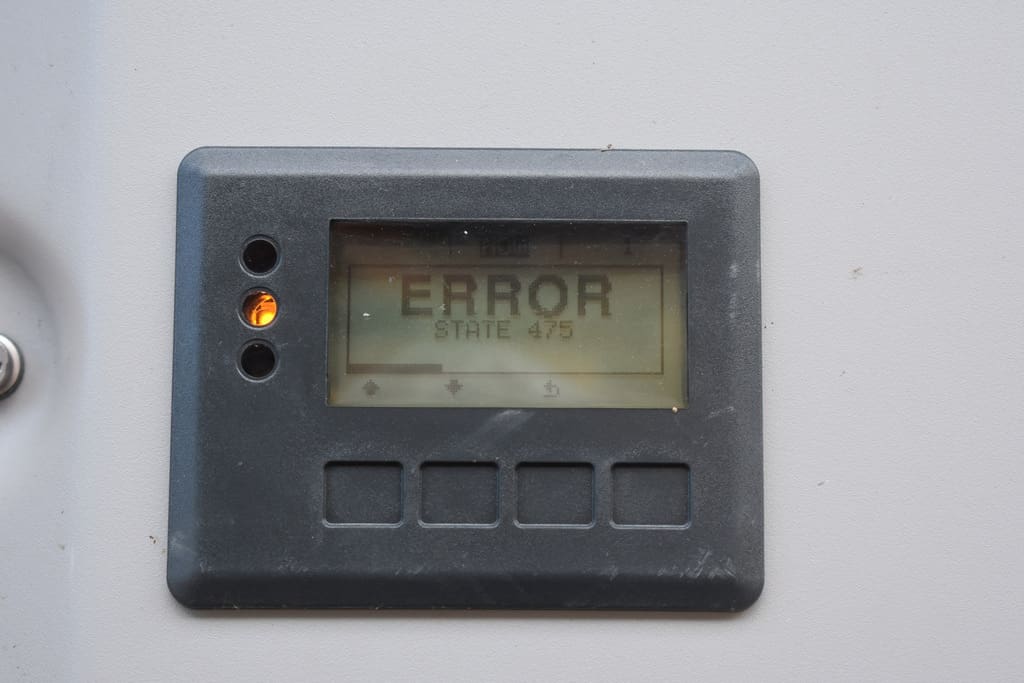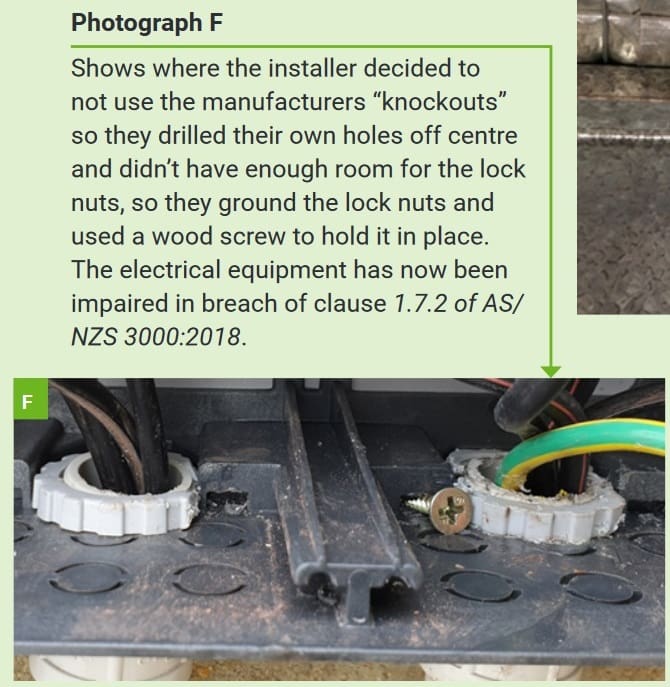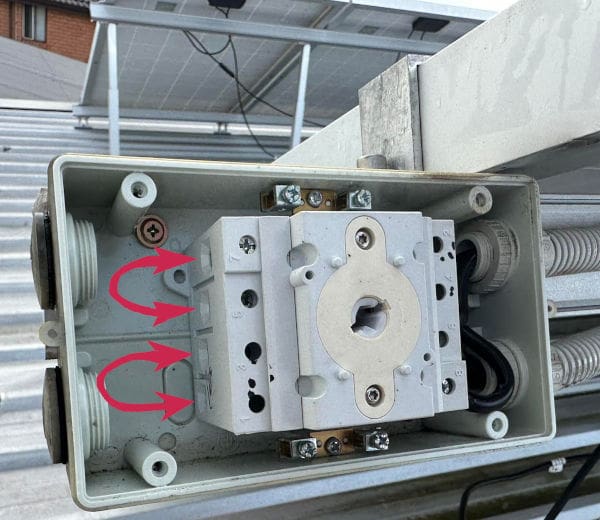
Solar panels don’t keep working into the night, and neither should solar installers.
Ever heard an installer promise a premium brand of solar panel, battery or inverter for an absolute bargain? As the old saying goes: if something seems too good to be true, it probably is. Here’s why good quality gear doesn’t always mean a good quality job.
It’s easy to pick low-class equipment, which I explored the dangers of last week; it’s cheap compared to top-of-the-line options like Fronius. But if you have two quotes for the same quality hardware but company A is charging half of what company B does, why pay more?
At 50 cents per watt, company A isn’t just boosting competition, they’re haunting the whole industry with horribly low margins which make everyone’s business unsustainable. When warranty problems arise, those companies will disappear.
One NSW-based customer of such an installer, David, allegedly found this out after their fancy Fronius inverter failed and, 35 phone calls later, realised their installer was “good at taking money but when it comes to after-sales service they are a non-event”.
David continued that: “This is a simple warranty fault (the inverter failed) and I need some paperwork to claim warranty. They were hard to understand. I also needed to know if they were going to send a technician out or I source my own technician. In the end I had to get a local company to do the work. The installation docket was not signed by the installer which causes problems with warranty … the technician from the repair company stated the the poor installation of the system was the likely reason for the Fronius failure.”

A Fronius inverter displaying an error allegedly linked to poor installation.
Borrowed credibility
A cheap installer using brand-name gear is just borrowing the credibility and reputation of an expensive brand.
You can install cheap stuff well, it happens all the time, but good gear installed badly is still a terrible outcome.
Ask anyone who bought a 1970s Jaguar assembled locally in New Zealand. British Leyland manufacturing with antipodean assembly was, er, just sublime.

The poor Fronius Snap inverter has been vandalised. image credit South Australian Office of the Technical Regulator
A Tale Of Two Installs
I recently asked a fellow installer, how do you judge a “cheap” job? His answer; mainly it’s about time.
His business budgets for 3 man-hours per kilowatt of installed capacity. 6.6kW x 3 equals nearly 20 hours. Add a lunch break and you’ve spent 7.6 hours per person or roughly speaking, a metric day’s work.
The example he cited was interesting though, two similar jobs, done serindipitously side by side. One was finished at 4:30pm while the other, which wrapped up at 11:30 am, is now headed for court.
That other quick job involved a $200 deposit over the phone and was supposed to cost $4400 all up, but alarm bells should have been ringing when the install team asked for $4200 as soon as they arrived.
Turns out the T&C fine print said pay before play but the customer refused, which is good because there’s a laundry list of defects:
- non-complaint panel clamp zones
- badly ground/fitted tiles
- conduit inadequately supported with cable ties in the roof
- unprotected earth wiring on the array
- rails cut off too short
- rails badly extended
- inverter too close to gas meter
- labelling not installed
Nobody on the roof would identify themselves by anything other than first name until a fourth person showed up, who was the actual licenced installer.
This contravenes the STC rules so I’m not sure how the time stamped, geotagged selfies were obtained for start, mid install and finish.
Nobody Wins Except The Lawyers
Taking this job to court will be difficult as it’s not actually finished.
The retailer offered a $1000 dollar discount in order to grease the wheels, but the customer is refusing to have the installer back to make good on the original contract. As mentioned, there’s no labels, no STC claim and no compliance certificate, which means the technical regulator can’t get involved with the complaint.
The upshot? It’s perverse but the consumer will likely lose the case in front of a magistrate because they’ve not been “reasonable” enough to get the job sorted.
Brands Are Indicative But No Guarantee
Poor installs aside, even high-profile brands slip up. LG Chem have made batteries that are a dismal failure and run a masterclass in what not to do for a national recall. Qcells have disappeared from Australia and left a string of disappointed customers and irate installers with warranty battles to deal with.
Sadly we’ve seen some failures across original equipment manufacturers and the retail price hasn’t always been instructive.

Red arrows show missing links, so for 5 years this was super safe. You can’t have any rooftop isolator fire if half the system never even works to begin with. Image credit: Jerome Edridge
Your Best Bet Is Still A Quality Installer
At the time of writing this you want to pay around $1000 per kilowatt of solar installed on your roof to get a good company running a sustainable business.
Sometimes you’ll get a reputable subcontractor who occasionally picks up a low-paid job from a cheap crowd, just to fill a hole in their calendar. So it’s not impossible to get a good job for cheap, it’s just not likely.
Be aware that a doorknocker selling systems for $2000/kW isn’t likely to be good either, but if you have a multi-faceted, steep slate tile roof in a rural location, the price may still be high for obvious reasons.

We really didn’t have to blur the address, this informative site map is mandated under the rules, but illegible anyway.
Give Yourself A Break
Engaging a quality installer at the outset is the best way to ensure you have the least trouble in your electrification process. While there’s always some chance a rouge apprentice might come crashing through your ceiling, if you check the one star reviews, you’ll see how the worst installers work.
At SolarQuotes we work with people we know are great. Click on the “I’m ready” button and if by some chance they’re not, we’ll intervene to help or we’ll put our own money up to make good.

 RSS - Posts
RSS - Posts



You don’t even have to be at the bargain end of the market to get a defective job done.
You can pay top dollar for top end gear and end up with a leaking roof and an unapproved systems that hasn’t been wired to work correctly.
A rouge apprentice is one who wears lipstick?!
Hi Neil,
Usually it’s just the colour of their face after the fact. 😉
However I’m not judging apprentices that wear lipstick, everyone is welcome, just so long as they can keep their balance & leave the high heels at home.
I paid an installer 25 grand for a system, but when I turned of my grid connect switch, my house was not self sufficient only part was, after contacting them I was told that my inverter was insufficient, that I would need an up grade.This was not what was agreed initially.I tried to do a deal with them but they would not have any of it.I contacted a certain government department Building commission NSW after they contacted the company who told them nothing but lies, the commission believed the company and wiped their hands of the matter, referring me to another Gov Dept, buck passing,This is ongoing, I shall probably have to take this to court, The company is ARKANA ENERGY, now rebranded as 1KOMMA 5%.
I’d like to give a good shout out. I paid just under$3000 for a 6.6 kW system using glass on glass Topcon panels and a Fox inverter.
The installers were courteous and efficient, ( the heavy rains subsequent to the install showed up zero leakages from our tiled roof) and apart from a small glitch in the way the circuit breaker was wired in – which was quickly remedied by the installer, the system has been working beautifully. The app is simple to use and the installer walked me through the steps to get it operational.
Hi Rudi,
We’d really like it if you can put in a review through our dedicated page. Click here to see where thousands of others have helped out.
As always, filter for one star reviews to see how they really deal with customers.